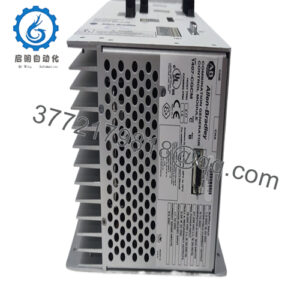Description
In industrial automation, where fusing PROFIBUS DP networks with compact PLC architectures is vital to sidestep protocol silos or polling delays that could desynchronize field I/O and central logic, engineers often encounter barriers like limited master capacity, acyclic service gaps, or the hassle of non-native backplane access in space-constrained racks. The ProSoft MVI69-PDPMV1 overcomes these as a high-performance PROFIBUS DP-V0/V1 Master module for CompactLogix and MicroLogix platforms, enabling up to 125 slaves with robust cyclic and acyclic messaging for seamless process control. Imagine a discrete assembly cell where Siemens ET 200SP modules feed status data to a MicroLogix controller—if the interface caps at 64 nodes or skips DP-V1 alarms, you’d risk actuator mismatches, quality drifts, or ESD trips that cascade into shift-long halts. This module is crucial in such high-reliability scenarios, where its backplane emulation ensures precise I/O signal mapping, supporting modular expansions that blend legacy fieldbuses without chassis overhauls or custom ladders.
The ProSoft MVI69-PDPMV1 is a staple for mid-sized operations bridging Siemens ecosystems, such as conveyor sequencing or valve manifolds, where its support for GSD file imports and up to 244 bytes per slave facilitates dense data exchange without bandwidth bottlenecks. It’s especially valuable in EMI-dense or extended-drop plants, offering RS-485 isolation up to 1200 meters and baud rates from 9.6 kbps to 12 Mbps to counter noise-induced retries that plague serial links. By incorporating ProSoft Configuration Builder for drag-and-drop slave setups, it streamlines diagnostics with event counters and error stats, aligning with objectives of predictive upkeep and reduced firmware flashes. In vibration-heavy or humid facilities, its single-slot footprint preserves rack airflow, promoting system stability. Keywords like “industrial automation,” “process control,” “I/O signal,” and “high reliability” align perfectly—the ProSoft MVI69-PDPMV1 dissolves fieldbus friction, minimizing engineering time for node provisioning and enabling synchronized flows in setups where PROFIBUS mastery underpins throughput and safety.
- MVI69-PDPMV1
- MVI69-PDPMV1
The ProSoft MVI69-PDPMV1 occupies a single slot in a CompactLogix (1769) or MicroLogix 1500 chassis, interfacing directly with the backplane to emulate I/O modules that map PROFIBUS data into controller tags for read/write operations without dedicated MSG blocks. Positioned in the fieldbus gateway layer of the automation stack, it drives the PROFIBUS network via a DB9 RS-485 port, supporting up to 125 slaves in multi-drop topology with token-passing efficiency, while handling DP-V1 extensions like alarms, diagnostics, and acyclic reads for parameter tweaks. This integration pairs with RSLogix 500 via sample ladder files and add-on instructions, where the module’s 1 MB memory buffers up to 100 command lists, ensuring sub-10 ms cyclic updates even under full loads.
In a standard configuration, the module’s master mode sequences polls with configurable timeouts and retry logic, exposing slave status via LEDs or backplane words for HMI overlays, all secured by address validation to prevent unauthorized nodes. For instance, in a packaging line, the ProSoft MVI69-PDPMV1 might query ET 200S I/O for sensor states, scaling bits to CompactLogix integers for PID loops—all while adhering to PROFIBUS DP specs for sync/freeze modes and fault recovery. Its compatibility with MicroLogix LRP controllers (except QBFC1B/L16x/L18x) simplifies retrofits, and a serial config port enables PC-based GSD uploads without chassis power-downs. This efficient bridging curtails gateway dependencies and boosts expandability in compact racks, letting engineers tune application logic over comm configurations in the wider process control ecosystem.
| Specification | Details |
|---|---|
| Model Number | MVI69-PDPMV1 |
| Brand | ProSoft Technology |
| Type | PROFIBUS DP-V0/V1 Master Module |
| Input Voltage | 5 VDC (via CompactLogix/MicroLogix backplane) |
| Operating Temp Range | 0 to +60°C |
| Mounting Style | Single-slot (1769 chassis) |
| Dimensions | 5.7″ x 1.4″ x 3.7″ (145mm x 35mm x 94mm) |
| Weight | 0.25 kg |
| Interface/Bus | DB9 RS-485 (PROFIBUS), Config serial port |
| Compliance | UL, CE, Class I Div 2 |
| Supported Protocols | PROFIBUS DP-V0/V1 Master |
| Typical Power Draw | 800 mA at 5 VDC |
Opting for the ProSoft MVI69-PDPMV1 arms your chassis with a fieldbus force engineered for node-dense duty, where its 125-slave capacity sustains long-term performance by polling 244-byte blocks without scan creep, letting ET 200 modules relay I/O with <5 ms jitter for tighter synchronization and fewer process upsets. In the field, this means valve banks in a filling station respond to CompactLogix commands without desyncs, optimizing cycles and curbing overfills—pivotal for operations where data freshness links to yield or compliance logs.
The module’s GSD-driven setup also eases integration loads, as ProSoft Builder auto-generates mappings for RSLogix, cutting config from days to hours in multi-vendor plants and enabling quick slave additions without ladder rewrites. Maintenance efficiency builds in: diagnostic counters track token errors for cable audits, with hot-swappable slots supporting fixes under 10 minutes, which aligns with lean strategies for sub-20-minute MTTR. For compact racks chasing fieldbus fluency, the ProSoft MVI69-PDPMV1 turns PROFIBUS from a protocol puzzle to a plug-in powerhouse, amplifying interoperability and resilience without power supply hikes.
In automotive trim lines, the ProSoft MVI69-PDPMV1 orchestrates ET 200S actuators, its RS-485 drops spanning 800 meters amid oily mists to deliver high reliability for process control—critical system uptime endures through acyclic diagnostics that preempt jams in high-speed assemblies.
Water booster stations harness the ProSoft MVI69-PDPMV1 for Siemens flow sensors, bridging MicroLogix polls in damp, remote vaults; its baud scalability upholds process control precision, balancing pressures without surge risks in variable-demand grids.
Pharma tablet presses deploy the ProSoft MVI69-PDPMV1 to sync DP slaves with CompactLogix, managing inputs in sterile, humid bays—its buffer depth ensures high reliability, dosing uniformly amid concurrent audits in GMP flows.
MVI69-PDPS – PROFIBUS DP Slave counterpart for bidirectional fieldbus setups.
MVI69-MNET – Modbus TCP module alternative for Ethernet-focused integrations.
MVI56-PDPMV1 – ControlLogix version for larger chassis expansions.
5205-DFNT-PDPM – ProLinx gateway add-on for standalone PROFIBUS mastering.
MVI69-DFCM – DF1 serial module for legacy Allen-Bradley ties.
MVI69-GSC – Generic serial comms variant for custom protocols.
1769-SM2 – CompactLogix serial module for config port extensions.
Before seating the ProSoft MVI69-PDPMV1 in your 1769 chassis, verify firmware (v2.2 or later via ProSoft tools) syncs with RSLogix 500 to dodge mapping glitches, and check slot distance rating (2 from PSU) to avoid voltage sags. Test RS-485 termination at 150 ohms for drops under 100 meters with a TDR meter, and confirm backplane power ripple below 100 mV at 5 VDC to prevent token drops; for Div 2, seal enclosures to NEMA 4. Import initial GSD files via Builder, benchmarking 64-slave polls under 20 ms.
Upkeep for the ProSoft MVI69-PDPMV1 kicks off monthly with LED checks for TX/RX greens, pulling logs via serial if faults blink—if CRC errors top 0.3%, probe cables; in humid spots, reseat DB9 quarterly with anti-ox spray. Semiannually, cycle acyclics with a simulator to affirm 12 Mbps under 95% load, and during annual audits, simulate slave faults to validate recovery under 200 ms, but offline: no live tokens. These PROFIBUS-aligned steps keep masters masterful without chassis churns.

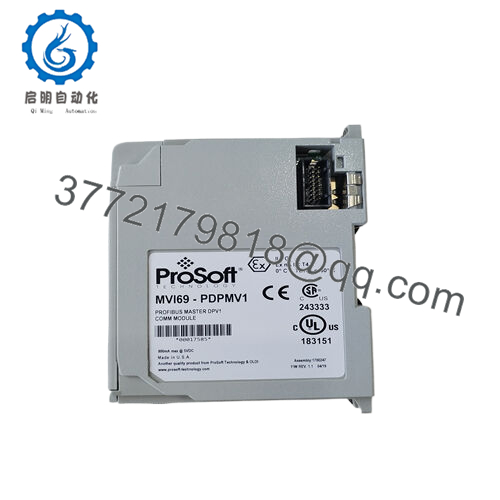
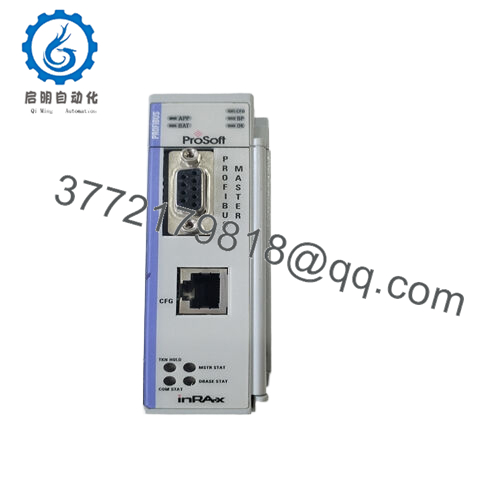
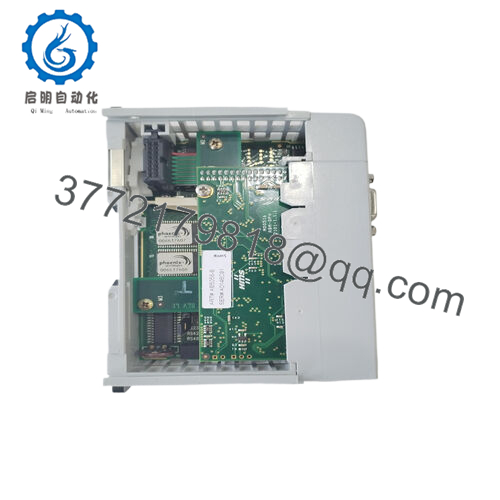
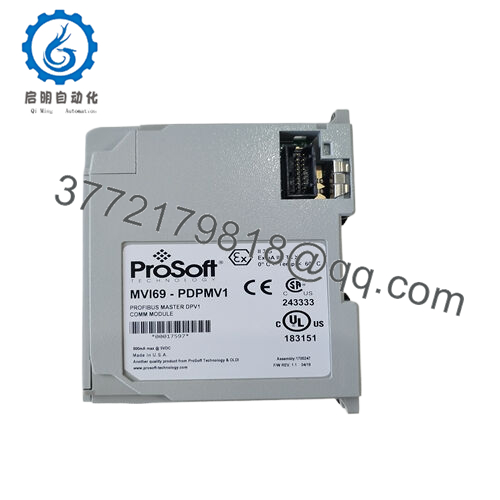
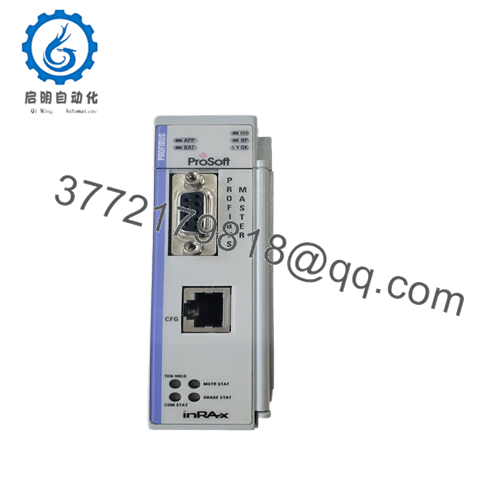
 WhatsApp: +86 16626708626
WhatsApp: +86 16626708626 Email:
Email:  Phone: +86 16626708626
Phone: +86 16626708626